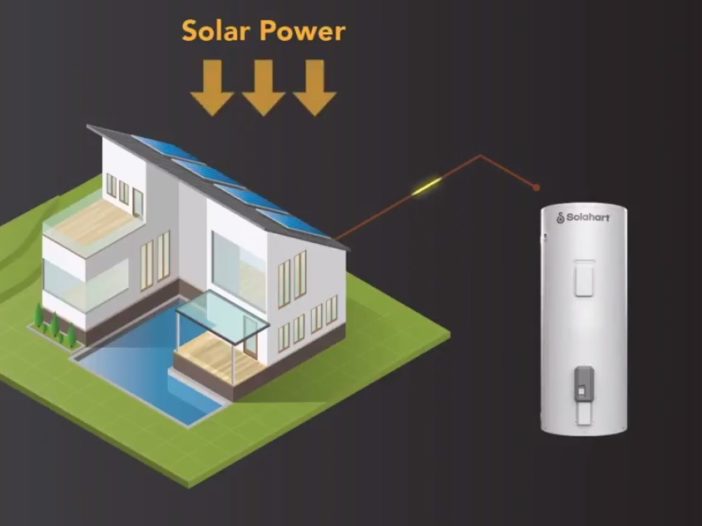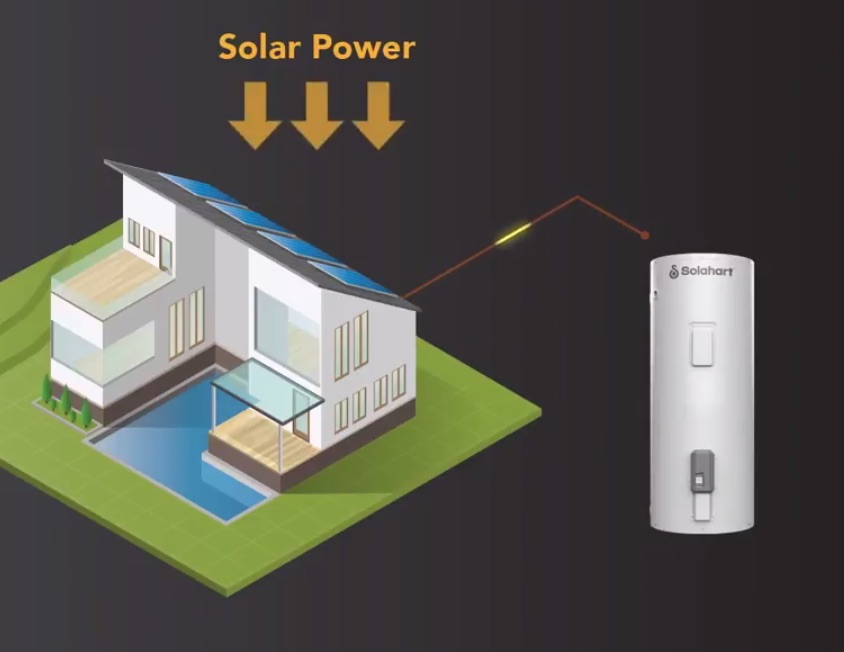
A new solar smart electric hot water system has hit the market in Australia, adding to a new wave of “solar hot water” technology that bypasses evacuated tubes and the like, and instead connects directly to rooftop solar, doubling as a cheap(er) alternative to home battery storage.
The new product, by long-time Australian industry player Solahart, is called PowerStore, and – like other solar diverters on the market – it monitors rooftop solar production, identifies when excess energy is available, then “diverts” it to heat water, rather than feeding it back into the grid.

As anyone following the industry would know, this service is nothing new – and has been offered by the likes of fellow Australian company Catch Power, Power Diverter, and Paladin, for a few years now.
These companies work with customers’ existing (or new) resistive element electric hot water tanks, an internet connection and a smart, small device installed in the switchboard. The smart version has cloud based software collecting data and weather forecasting.
SolaHart – as it says itself on its website – has pioneered solar water heating in Australia for over 60 years.
But times are changing, and so is technology.
Solar diverters – described to One Step by an industry insider as “the best thing to happen to solar hot water in 18 years” – have been chipping away at the traditional market, particularly as more and more Australian homes install rooftop solar.
SolaHart’s new offering in the space brings it up to speed on this. And – while nothing revolutionary – can perhaps, claim one first: a purpose-built solar smart hot water tank.
The company says the PowerStore tank includes temperature sensing throughout, and uses a two stage heating process to rapidly heat the top section of the tank first and improve hot water recovery.
It says the “unique, triple blade heating units” also allows for rapid changes in the amount of power used to match the available solar energy – such as when clouds pass or if there are changing electricity loads.
“Put simply, Solahart PowerStore is like a battery, in that it stores excess power – only it’s in the form of hot water,” says general manager, Stephen Cranch.
“Many households today fill their available roof space with panels to generate as much power as possible. However, these larger systems can produce more power than the household needs (especially during the weekdays), and this excess power is then fed back to the grid often for little financial return.
“(The PowerStore system) delivers hot water when you need it and uses your excess solar power to improve your solar investment.
“With a much lower up-front cost compared to a solar battery, it makes energy storage more affordable for Aussie families.”
Cranch offers the example of a family of four in Sydney that uses 25kWh of power a day.
“With a 5.2kW solar power system (this family) could export up to 50 per cent of its generation back to the electricity network.
“If they had replaced an electric water heater on off-peak tariff 2, the combined solar power and energy storage system could save this family up to $1,700 per year on their energy bills.”
Another Sydney family of five, this time living in Frenchs Forest, have installed a PowerStore, and combined with their 8.7kW solar system, are expected to save $3,500 on their annual power bill.
“The combination of Solahart PowerStore and solar panels will help householders enhance their solar investment,” says Cranch.
“It …helps reduce the amount of grid energy used to heat water, given that 25 per cent of your household energy is typically used for electric water heating.
“It also helps take pressure off the energy grid which is currently faced with a phenomenon called the ‘duck-curve’, where too much solar energy is being fed back to the grid during the day when demand is low,” he said.
PowerStore has a 10 year product warranty and a premium Class Y enamel coating allowing it to withstand high water temperatures and therefore store more solar energy.
Here’s a video you can watch about the technology:

Sophie is editor of One Step Off The Grid and editor of its sister site, Renew Economy. Sophie has been writing about clean energy for more than a decade.

